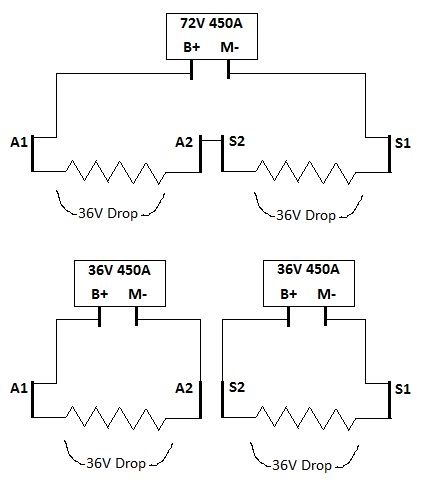Quote:
Originally Posted by Ryland

in a series wound motor those windings get wired up in series, now as I understand it you could also power them up using separate controllers...
|
Thanks. You had me thinking about this all evening, while I was at work, and that's bad.
As I see it, two cheaper controllers would make a series wound motor perform like a motor being fed twice the voltage. Let's use 72V and 450A as an example with the motor at the perfect rpm to draw 32.4KW of energy (ignoring battery voltage sag). Two resistors in series, the armature windings and field windings, will have a 36V voltage drop across each of them. This, of course, assumes that they both have the same resistance (which I doubt they do). If they do, the same power and rpm can theoretically be achieved by using two 36V, 450 controllers, one powering the armature and the other powering the field.

Thus, if you have a 36V battery pack and two 36V controllers, could you not get the same performance (speed) as with a 72V pack and one controller? If yes, then BAM!...I just punched a high voltage pack in the face!
I just need to know whether the armature has the same resistance as the field. If nobody knows the answer to this, it would be ridiculously easy to figure out. Somebody go for a drive with your EV and a voltmeter. Measure the voltage drop across the armature vs the voltage drop across the field. Who wants to do this for me?